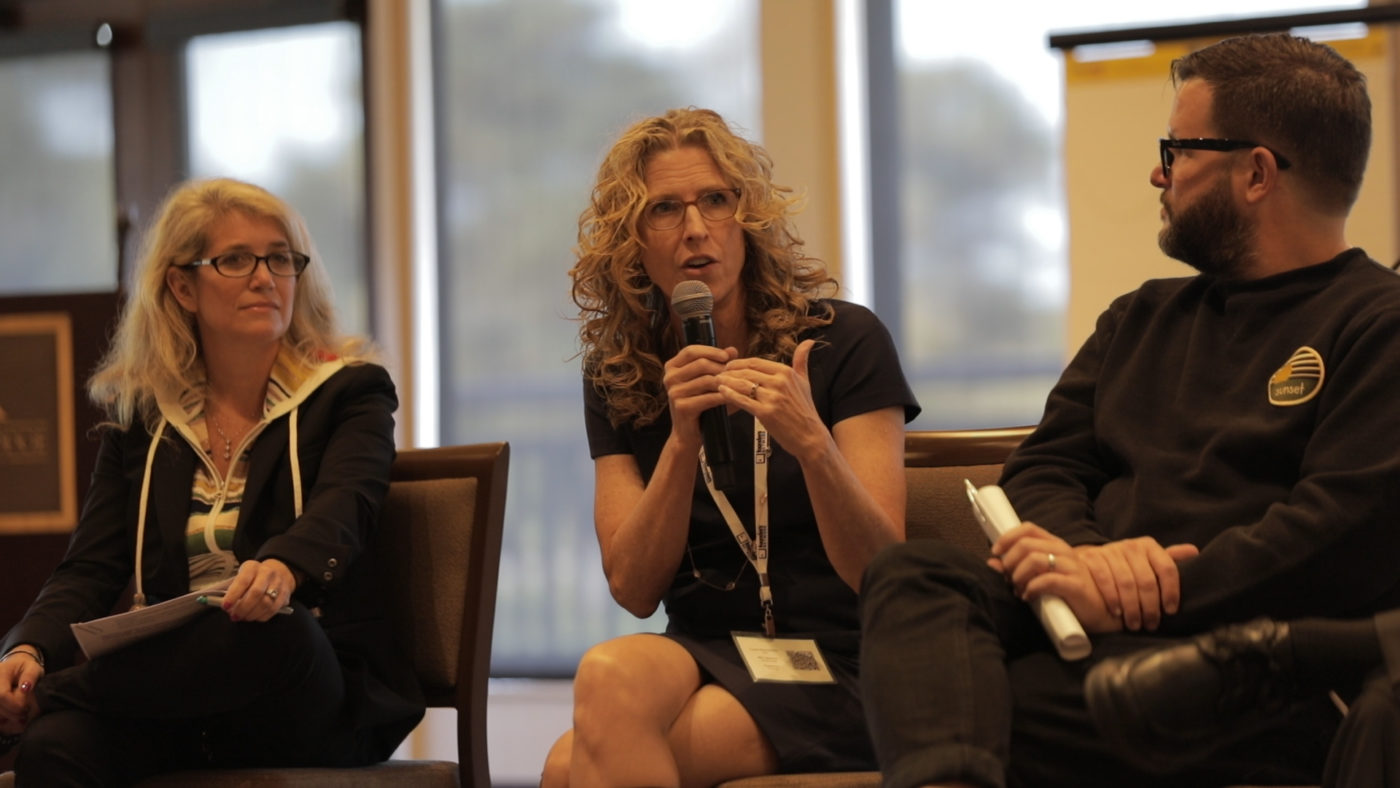
When I set out to write an article about the future of education, I had no idea how deep the rabbit hole went. I graduated from Binghamton University in upstate New York in May, 2007. In the short time since I donned a graduation smock, the grades and accomplishments which landed me a spot at one of the best SUNY schools then wouldn’t even get me a second look from the admissions board today. Having aspirations to create an Entrepreneurial University, as an alternative to traditional degree paths, I have been a keen observer of educational trends in America. What disturbs me is how much emphasis has been placed on changing the administrative and testing aspects of education, but fresh ideas, approaches and technology are rarely talked about in mainstream media.
My initial thoughts were about the status quo; universities with billion dollar endowments don’t really have any incentive to change the way that education happens, and public schools are caught up in a tide of politics and budgetary concerns. As a result, traditional degree paths can be woefully inadequate in preparing graduates for the workforce. Jobs lost in the last recession are not likely be replaced with the same type of jobs, as corporations must be scissor lean to compete. The playing field is constantly evolving. More and more, an entrepreneurial mindset, personal branding and individual accomplishments will set successful applicants apart. I decided to test these presumptions by talking to the founders of several firms that are facing the challenges of an educational culture that is in dire need of some fresh thinking.
A better way to study?
For Becky Splitt and Christopher Klundt, founders of StudyBlue, mobile technology comes first. Their main objective is a seamless experience across every device that a student might use to view their concise, one topic centric, user generated note cards. Students have been jumping at the opportunity to create content on this free service, with over 50 million note cards and counting. 1.4 million people are studying and learning collaboratively, and the trend is not slowing down. Many would agree that what’s most important about college is not so much rote memorization, but learning how to learn. Becoming a lifelong learner is a noble and underserved pursuit in todays workforce. StudyBlue helps create one large study group, hacking the information, breaking down problems to their simplest elements and putting them back together in the most cohesive way possible. This is of incredible value to both job seekers and entrepreneurs, whose analytical skills in synergy can create a much better understanding of complicated concepts among those using the service.
To keep the content relevant and current, users are allowed to rate notecards. Students concerned about privacy can decide not to share their notes. Becky was kind enough to show me this enormous database in action, sorting by relevance of topic, and further by how many people rated the content or ‘liked’ the content that was pushed to the top. “There isn’t a lot of junk or fluff. Students are here for a serious pursuit of knowledge, and take this seriously.” says Christopher. StudyBlue got started in Wisconsin in the June of 2009 with a $2MM funding round, later securing $3.6MM in the summer of 2010. The founders are staying focused on growing and improving their service, choosing to keep their heads down as opposed to shouting from the rooftops. The strategy is paying off, as seen by their explosive growth. “I just wish I had something like this when I was in school,” one educational expert has said. A student in an Organic Chemistry lab can pull out their phone, search for the relevant topic, take a picture or video, use voice control to interact with the information, and keep up with their learning in an interactive way. The content is immediately available to all their devices through the cloud, and can be shared throughout the StudyBlue community. “Teachers can browse the notecards to see how well the concepts are being grasped, and pivot in real time.”, says Becky.
What about the high cost of tuition, textbooks, and student debt?
Colin Barceloux initially just wanted to make some cash on the side by selling ‘no value’ textbooks online to students at other schools. He came to see the potential for rentals in this space, and founded BookRenter.com in order to bring his vision to the world. “The high costs don’t come from the university or the bookstore, they come from the publishers and wholesalers”, says Colin. “Students spend over $10 Billion per year on textbooks, so we thought that with the size of the industry, coupled with the leverage of the internet, we really had something.” When asked how iBooks might affect the industry in the future, he makes a great point. “Consumers will continue to move into digital media in droves, provided that they have the final buying decision. The benefits in access, distribution, and cost are easy to understand. Unfortunately, students are told what the approved content is by professors, who are given content by the big five publishers, so the changes are slow to happen.” BookRenter has become a major distribution network for publishers, a channel for tens of millions of dollars in inventory. “Students used to feel helpless, having to shell out thousands of dollars per year for textbooks they would likely use only once, sell back for 25% of the value, and see them being sold to the next year students for 75% of the regular price. Now with textbook rentals, there is finally another option.”
What really worries people who are finishing school and coming into the workforce today is their assumed debt load. Some say there might be an education bubble brewing, creating far more qualified prospects than spots to fill. With fewer jobs, and more debt, students choose to stay in school longer, compounding the problem. “Since 2002, the costs of educating yourself at a university have nearly doubled.” Uri Pomerantz, founder of Bright Frontier Financial says. His firm is currently working with banks and qualified lending candidates to rework the student debt equation, to allow for more creative financing options for higher education. His track record, and how quickly he articulates and executes ideas, are impressive. He goes on to paint a picture of a trillion dollar student debt cloud that hangs over people during what should be the most exciting and hopeful time in their lives. “We can also help recent graduates in non intuitive ways, such as helping them raise their credit scores and pay less over the life of a loan.” Echoing some of the ideas of Ramit Sethi and Robert Kiyosaki, Uri and I discuss the finer points of financial education and how many graduates know very little about money. “Those early years after college can make or break your financial future, people need to learn good investment habits and start building an asset base that will sustain them, instead of hoping to have enough money when retirement rolls around.”, says one expert. “Students should also be focusing on investing in themselves and their earning potential, but having more degrees may not be the answer. You really need to be increasing the number of tools in your entrepreneurial toolbelt.” Uri hopes to enact some real, lasting change in the way education is financed. While still in its beginning stages, this firm will be one to watch.
For those who want to create and sell content, an often overlooked asset, look no further than Graphicly, the latest brainchild of Micah Baldwin, who has been a serial entrepreneur since the age of 11, and is also responsible for the Follow Friday hashtag (#FF) on Twitter. Graphicly allows content creators to share a portfolio, ebook, presentation, app, music or any other project on multiple distribution platforms for one low price. In the relentless pursuit of creating a personal brand, students can use Graphicly to make some money and gain some notoriety from their work. “We aim to be one stop shopping for those who want to deliver their content across multiple relevant channels”, says Baldwin, “It seems like a no brainer that people shouldn’t have to log in and upload items to the Kindle store, then iTunes, then Android. It should all flow seamlessly, and not cost a lot.” The result is an impressively powerful and easy to use platform, that could be a much needed source of revenue for a student or budding entrepreneur who is still just getting started, or an alternate route in publishing for a professional author or musician.
A more effective job hunt?
Andrew Maguire of InternMatch wants to help students avoid the shotgun approach to the internship search process, firing dozens of resumes at prospective employers. Finding an opening with a firm is only half the battle. You have to get their attention, sell yourself to them, and get them to give you an offer. InternMatch educates students on every step of the process; helping them put their best foot forward for the employers they find most compelling. “The typical listing model, where companies post a blurb that stays up for 30 days, makes it difficult for students to differentiate between internships, so it’s hard to customize an application. Employers hate generic resumes and cover letters.” says Maguire.
“We help companies to showcase the unique culture of their internship programs through rich content. Students want to get a feel for the people they’ll be working with, the office environment and the valuable learning experiences taking place. ‘Campus Hubs’ allow companies to interact with students year-round and gives content control to recruiters,” he continues. “Students need a way to connect with prospective employers that is highly personalized. Access to Campus Hubs gives students the opportunity to engage with employers through video, photos, social media, and Q&A so they can get a strong sense for whether or not there’s a good fit before applying.
The ‘catch-22’ is that applicants need the internship to get experience, but experience is needed to get the internship, and ultimately the job. InternMatch encourages students to learn about exciting companies earlier in their career, so they can start to create a freelance portfolio tailored to the companies where they ultimately want to work, showing initiative and passion for what they will be doing. If you don’t show some aptitude with the tools you will be using in the real world, how can you expect a company to hire you to do that for them? “You need to be blogging, tweeting, working on projects, and generally getting your name out there, so that when a company looks for you online, you’re everywhere.” Campus Hubs are their primary source of revenue, and InternMatch charges companies for access to the polished candidates they create as a result of their educational efforts. They work with over 180 schools nationwide and growing. “Our services are free for students, and always will be. No one should be denied great tools and career opportunities because they can’t afford them.” says Maguire.
But what about those that seek an entrepreneurial education?
Too long has the entrepreneurial path been seen as an all or nothing approach, characterized by high risk and huge rewards for the few successes, and little attention paid to the droves of failed startups that litter the Silicon Valley landscape. Incubators, such as Dave McClure’s 500 Startups, Y Combinator, and several others are beginning to bridge the all or nothing gap. “Not everyone has to look at a startup as Mark Zuckerburg or Bill Gates dropping out of Harvard and creating a company that changes everything”, says one analyst. “There can be a happy medium where budding, hungry entrepreneurs can learn the skills they need to make it without risking everything.” Many experts say that an alternative career path for those hungry dreamers, for whom the traditional educational model may not resonate, will be a great driver of success and create many more jobs in the economy than traditional institutions.
Steve Blank, legendary entrepreneur and professor, who teaches at Berkeley and Stanford, shares his thoughts: “We can’t just think of startups as smaller versions of big companies.”, he says, when asked about what he thinks has been lacking in previous efforts to teach entrepreneurs. He is hopeful for the future, however. “We think we may have cracked the code. The key lies somewhere between a curriculum designed to teach entrepreneurs what they will need to know in the founding of their company, and having mentors available as resources.” He continues, “We certainly can’t guarantee the success of a startup, but overall we can help them succeed more often, by teaching them how to bootstrap, iterate quickly, fail cheaply, and by giving them access to people who have been in their shoes already.” Online education is another component that will continue to grow and become more relevant, as better teaching tools become widely used. “I think the things that we are doing are going to surprise a lot of people, and the world shouldn’t count America out when it comes to innovation. We are seeing signs of a new American Renaissance”, says Blank.
As a result of my research for this article, I was bombarded with information, keen insight and hopeful possibilities for the future of education in America. Talking to these entrepreneurs about their successes, and where they see things going, was a truly humbling and eye opening experience. But in the end, I was already looking to be wowed. In the real world, it comes down to a marketing and awareness problem. Sadly, even though there are products and services that can solve many of the problems inherent in the current educational model, if they don’t come to the attention of the people in position to enact the changes, then educational reform is dead in the water. Awareness of the problems, and possible solutions, brought to the attention of those with the means to enact change, is a great first step toward overcoming the challenges in education today, and securing a bright future for those currently writing the next chapter in our history.
This article has also been made available on AnonymousExploits.com (Brad’s personal blog) and on Forbes.
Brad holds no positions in any of the companies mentioned in this article.





